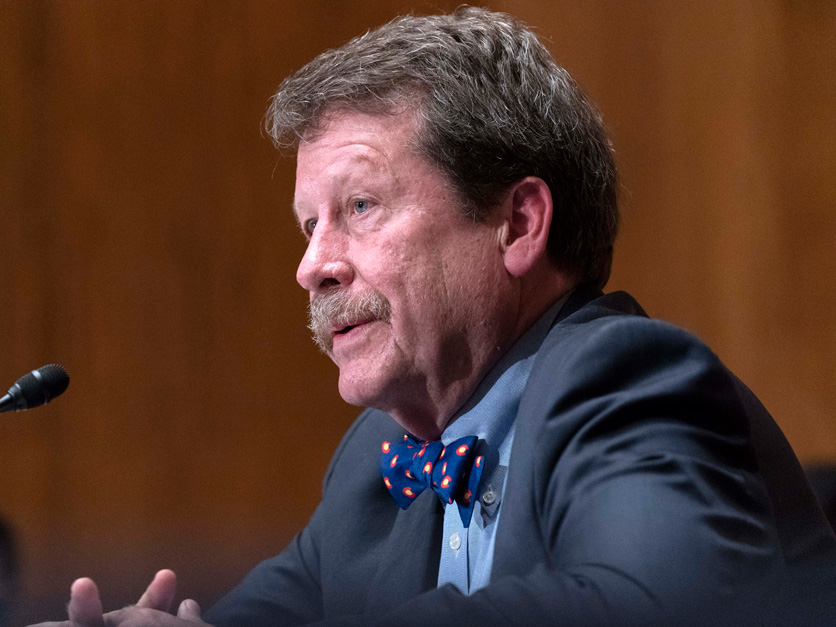Agricultural groups and producers have plenty to watch in 2023 when it comes to federal regulations or guidance that might affect farm operations.
According to some of those groups and the government’s own plans, issues to keep an eye on include the ever-present “waters of the U.S.” definition, renewable fuels, food safety, and emissions from animal operations.
But first, PFAS, a family of thousands of chemicals also known as per- and polyfluoroalkyl substances or “forever chemicals” because they don’t break down naturally in the environment. EPA has proposed designating two of the most widely used, PFOA and PFOS, as hazardous substances under CERCLA, the nation’s Superfund law.
The American Farm Bureau Federation was direct in its November comments warning EPA that the designation would impact farmers by automatically triggering cleanup liability.
“Farmers and ranchers are in no position technically, economically or practically to address the impact of the presence of PFAS chemicals and especially PFOA and PFOS which continue to be found in virtually any place where soil, surface and groundwater has been tested,” the Farm Bureau said, urging the agency to withdraw the proposal and instead use its authority to set drinking water and pollutant discharge standards to address the issue.
Contributing to the ag sector’s concerns is farmers’ widespread use of biosolids as fertilizer, AFBF said. Numerous studies have shown biosolids contain PFAS, and farms in New Mexico, Maine and Michigan have faced financial collapse when the chemicals were found in milk from dairy cows and beef cattle. "Designating these chemicals as a ‘hazardous material’ before setting a regulatory standard for biosolids is very concerning," AFBF said.
“The concern here is certainly land values, because if you have a contaminated field, you have lost the value of your land,” Courtney Briggs, a senior director of congressional relations for AFBF, said at the group’s annual meeting in San Juan, Puerto Rico, this week.
“Let me just be clear,” Briggs said. “As you know, farmers do not in any way at any point in their operation, use PFAS. It just arrives at a farm field through the water supply or through biosolid use. We are the victims here. I call us ‘passive receivers.’”
EPA is planning to release a biosolids risk assessment in late 2024, which could serve as the basis for a future biosolids regulatory standard, and “might provide a CERCLA defense to the biosolids liability going forward, but would not provide liability relief retrospectively,” AFBF said in its comments.
“EPA’s proposal to exercise its never before used CERCLA remedial authority to designate PFOA and PFOS as CERCLA hazardous substances to address the ubiquitous contamination of the environment, including agricultural lands, is the wrong tool to deploy at this time,” Briggs said.
EPA also will be reconsidering an exemption from reporting emissions from animal operations under the Emergency Planning and Community Right to Know Act, or EPCRA. The National Cattlemen’s Beef Association is one group that “will be closely engaged in any related rulemaking,” Mary-Thomas Hart, NCBA’s government affairs chief counsel, said.
And of course, EPA will also be busy working on its regulatory approach to WOTUS, the definition of “waters of the U.S.” under the Clean Water Act. Environmental groups have largely praised the EPA and Army Corps of Engineers’ proposal for its recognition of ephemeral streams, among other changes to the Trump administration’s Navigable Waters Protection Rule, but farm groups and farm-state lawmakers have been critical, calling the proposal an overreach.
They also say EPA and the Corps should have waited until the Supreme Court issues its Sackett opinion, which is likely to force the agencies to reexamine its regulations.
“With the final rule out, the real work begins,” Hart said. “We’ll be watching EPA as they develop implementation guidance related to the December 2022 rule, while simultaneously waiting for the Supreme Court’s decision in Sackett. Of course, the direction taken by the court will significantly impact the agency’s workload for the second half of 2023.”
 Mary-Thomas Hart, NCBAThe ag and food industries also are monitoring a proposal from the Securities and Exchange Commission that would require reporting by public companies of Phase 3, or supply chain greenhouse gas emissions.SEC Chair Gary Gensler emphasized at a Senate hearing in Septemberthat the regulations aren’t targeted at farmers, but at public companies that have pledged to reduce GHG emissions or those where GHG emissions are expected to have a “material impact” on their businesses.
Mary-Thomas Hart, NCBAThe ag and food industries also are monitoring a proposal from the Securities and Exchange Commission that would require reporting by public companies of Phase 3, or supply chain greenhouse gas emissions.SEC Chair Gary Gensler emphasized at a Senate hearing in Septemberthat the regulations aren’t targeted at farmers, but at public companies that have pledged to reduce GHG emissions or those where GHG emissions are expected to have a “material impact” on their businesses.But Hart said the proposed rule “could implicate thousands of businesses that have never been subject to SEC reporting, including farms and ranches.” She said the agency will need to look at the implications of a recent Supreme Court decision (West Virginia v. EPA), which she said “will have a significant impact on agencies’ ability to write climate-related regulations without a clear statutory mandate.”
“It will be interesting to see what, if any, changes are made by the agency to comply with the West Virginia decision and address concerns brought up by supply chain participants,” she said.
Meetings are scheduled at OMB in the new year on requests from nine states to allow the use of E15 gasoline in the summer months. Illinois, Iowa, Kansas, Minnesota, Missouri, Nebraska, North Dakota, South Dakota and Wisconsin have sought a rule from EPA, action many have cited as an impetus for House and Senate lawmakers to introduce bills to allow year-round use late last year with the backing of the American Petroleum Institute.
In addition to those issues, several other regulatory actions important to agriculture have been forwarded to the Office of Management and Budget for review. Here are just a few highlights:
USDA
Most recently, OMB began examining a proposal from the Food Safety and Inspection Service to allow voluntary labeling of products with “Product of USA” and similar statements. The agency also is looking at a proposed framework to reduce Salmonella in certain not-ready-to-eat stuffed chicken products.
In early August, OMB received for review a final rule on strengthening enforcement of the Organic Foods Production Act. And in late October, it received a proposed rule from USDA on making school meals consistent with the 2020 Dietary Guidelines for Americans. Two meetings have been held involving OMB officials — one with representatives of the International Dairy Foods Association and one with public interest groups, including the Center for Science in the Public Interest, Academy of Nutrition and Dietetics, and American Heart Association.
Interested in more coverage and insights? Receive a free month of Agri-Pulse by clicking on our link!
Food and Drug Administration
Under the category of reviews that have been going on since early 2022, OMB also is reviewing draft FDA guidance for industry on the labeling of plant-based milk alternatives and voluntary nutrient statements. The agency received the documents on March 31, 2022, and six meetings were held in May and June with stakeholder groups and companies.
Edge Dairy Cooperative is among many dairy entities concerned about the proliferation of plant-based liquids identified as “milk.”
“Dairy products are safe, wholesome and nutritious and should be accurately represented to customers as such,” the cooperative said in an announcement of its priorities for 2023. “While there is room for a variety of products in the marketplace, it is wrong to mislead customers. Some non-dairy imitations violate existing labeling laws.”
FDA, which has been criticized for the pace of its regulatory review of cannabidiol, or CBD, has also sent to OMB guidance for industry on “quality considerations for clinical research” of cannabis and cannabis-derived compounds.
The regulated industry also will be watching closely to see how FDA Commissioner Robert Califf plans to reorganize the agency to give food and nutrition issues more attention. A review conducted by the Reagan-Udall Foundation of the human foods activities at FDA found a lack of clear direction and leadership have all contributed to yearslong delays of decisions on guidance and regulations.
 FDA Commissioner Robert Califf (AP Photo/Jose Luis Magana)
FDA Commissioner Robert Califf (AP Photo/Jose Luis Magana)The report recommended Califf establish a clear leadership structure for the foods program, with one possibility being a deputy commissioner for foods, an option favored by a diverse set of trade associations, public health groups and state regulators.
The report also said FDA needed to be more transparent about its decision-making process.
Califf also has pledged to review the agency’s policy on feed ingredients, which has been criticized for treating the ingredients as drugs, delaying approval of substances that could reduce cattle’s methane emissions.
Labor
Six meetings were held at OMB in September and December to discuss the contents of a final rule sent from the Labor Department in November that would change the way it determines the Adverse Effect Wage Rates (AEWRs) for non-range agricultural occupations.
Among the interested parties: Farmworker Justice, National Council of Agricultural Employers, and Custom Harvesters Inc. Ag employers are concerned the methodology proposed would result in their paying too much for labor, while farmworker advocates say the “prevailing wage” system, used to determine the minimum employers are supposed to pay, needs to be fixed because most states have not set such a wage.
For more news, go to www.Agri-Pulse.com.


